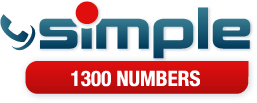Let’s unpack what a Hunt Group is and how they work.
This is a question David gets asked a lot on the phone, but often, people don’t even know what it is called – they just describe the functionality they want.
A Hunt Group is not connected to a particular handset, but instead to a specific number – calls made to that number can be routed to a predefined group of extension numbers. A 1300 number or call tracking number has this functionality, and it isn’t tied to a particular answer point.
A commonly requested scenario is the ability to have phone calls pass through a few numbers (ie. local fixed line answer point or mobile phone), to then be collected at the end by a Voice to Email if there was no answer on each of the numbers. This is the absolute description of Hunt groups.

A hunt group (often referred to as line hunting) is the functionality of finding or hunting for a recipient for the call. It is often a group of phone numbers, or extensions in the context of Hosted PBX.
There is really two ideas here. The Hunt group is the list of recipients, and Line Hunting is the process of finding the specific answer point for the phone call.
Hunt Groups are essential for you if you value the calls that your customers place through to your business. So if you are offering a product for sale and often get sales-related phone calls, then you will definitely value those calls, and technology such as Hunt Groups and Line Hunting will mean you will answer more calls quicker and enable you to have a backup option to capture the caller’s details if you are unable to answer the call.
That is really the second best reason, if you know you aren’t able to answer as many calls as you’d like, make use of a hunt group and land your callers in a voice to email so you can grab their details for a callback.
On the contrary, if you are offering phone calls for support and realistically don’t have the resources to engage every call you may want to deliberate not make use of a hunt group to capture as many calls and land them to a Voice To Email.
The great news is you can use the Hunt group technology as a free feature across the Simple Telecom suite of products including:
The core benefit you receive as the owner of small businesses is looking to manage your incoming calls is the ability to route calls or diverts calls through so your users can talk to a company contact as quick as possible.
Other key benefits from making use of a Hunt Group include:
The term Hunt Group encompassing a wide range of potential configuration options. You will need to carefully consider which configuration best suits your business to answer calls. Things like high call volumes and defining business hours can greatly help.
As normal if you have a specific question or requirement for your incoming phone system calls you may find it easier to discuss with us on the phone – hit the Contact page for options to get in touch.
This would be the most common use of a Hunt Group by Simple Telecom customers. Put plainly calls for your small business are called in sequence or in a linear fashion.
The first line that answers the call stops the others from receiving it, however if missed the next call will be able to answer. This is relatively basic configuration option but it is also the most common as it solves almost all incoming calls and allows you the ability to route calls through to a few employees before doing a final land at a Voice To Email to capture the call as a last resort.


Simple Telecom refers to this as a Simultaneous Dial because in essence, that is what this is. The Platform will distribute calls to everyone on the list at the same time, the first person to answer will capture the call.
A Simultaneous Alert Hunt Group works best when the list of people receiving the call at once are all on the same type of device and same network. If we introduce mobiles and fixed lines or voip, it can be inconsistent and a poor experience for everyone.
A simultaneous dial would most commonly be used by a office that has a few employees and has a phone system (such as the Simple Telecom Hosted PBX) capable of handling the incoming calls and diverting the calls as required.
A circular hunt group, also known as ’round robin’ will operate exactly the same as the linear variation however it has one key difference. When it gets to the end of the list, it just goes back to the start and goes through the entire list endlessly until someone answers.
Obviously this type of configuration has the ability to be extremely annoying and also to tie up resources endlessly, so we exercise extreme caution and we work with our customer to understand exactly what they want this type of service for and that they understand how this type of configuration can go wrong.
Generally this type of circular hunting is only used as an escalation type service after all other avenues have been exhausted.


As the name suggests this is the method of distributing calls by modern phone systems to the extensions that has not received (or made) a call for the longest amount of time.
In the context of a 1300 number or a virtual Australian number this configuration option is not available in the Simple Telecom “line hunt” however this feature could be enabled in the Simple Telecom Hosted PBX service.
This type of configuration would be common for call centre environments where you are looking to maximize caller experience and staff utilisation across the floor.
This is where the really good news starts. Simple Telecom offers a wide range of the configuration options discussed on this page as a free internal addon to all of the following products:
– 1300 and 1800 Phone Words
– 1300 Numbers
– 1800 Numbers
– Virtual Australian Local Numbers
– Virtual Australian Mobile Numbers
This hunt group set is just one of the many free features provided with your simple telecom service – you can read more about our free additional benefits via our list of free included 1300 number features.
Simple Telecom offers its customers a fully feature customer console area which will allow you to manage your account details, make payments – and most importantly manage the configuration of all your numbers.
It goes without saying your first hunt group will be listed in your control section of each number and you can make changes to the phone numbers, the order and the duration of each single phone number.
With Simple Telecom – yes it is. We include Line Hunt as a free configuration option for all our services.
Yes, you can. All Simple Telecom phone numbers that receive calls (inbound calls) have the option for you to define a Hunt Group as the call flow for that number.
Yes, you can. You have the ability to present a Keypress menu of options to the caller and/or make use of the time-based routing configuration to filter out after-hours calls to an alternate second phone.
Yes, you can. Simple Telecom provides a ‘customer console’ that gives you the ability to make unlimited changes at any time to your service. Go wild!
Yes, you can. If you are looking to do something very specific please get in touch, David will be happy to discuss all sorts of wild call flows with you.
The answer to this question really depends on the type of business you run and how you want to engage with your callers. Almost every single customer David has ever spoken with would make use of a “general line hunt” to flow the caller through a sequence of destinations most commonly captured at the end by a Voice To Email.
Prosperity Media have used Simple Telecom’s 1300 Number service for several years for our growing online marketing business. We have found the pricing to be great and the customer service to be top notch. Any questions we had were quickly answered via call or email. The reports provided are also great. If you are a small to medium business looking for a 1300 number or managed answering service chat to the team at Simple today.
When I first looked into getting a 1300 number, it seemed impossible – it looked like I would have to sign up to a plan and pay a huge monthly fee to one of the big Telcos. I was delighted when I found Simple Telcom, and discovered that I could set it all up so easily. Our auto top up account is super-convenient, and the website is easy to use. Technology is a powerful tool for small business, and tools like Simple Telecom help us display a professional brand to the world.
To have a 1300 Number Callers can call a 1300 number from any fixed landline in Australia for the cost of a local call. Simple telecom provides quality services & wide rage of call routing built in facilities which helps in handling big call volume very easily.
Upgrading from personal phone numbers to a professional 1300 number service has changed the way we do business at Creative Installations. Simple Telecom helped us set up our 1300 number to work just the way we want for maximum customer satisfaction, with on going support and an increase in customer enquires, getting a 1300 number with Simple Telecom comes highly recommended if you want to grow your business.
As Australia’s largest seller of Isagenix products, we handle a large number of phone calls from our customers. It was paramount for our business to be able to redirect our three most common customer queries to relevant members of our business. Simple Telecom allows us to do this easily with their keypress menu functionality. We have also made use of the ability to route a call to multiple phone numbers – if one of us can’t get to their phone it is automatically rerouted to someone that can.
Here at Digital Hitmen, we use Simple Telecom for a variety of services including our 1300 customer service number and recording of phone calls. We’re regularly on the road meeting clients, and their recording services allow us to refer back to calls we make during transit. If we ever have an issue with the setup of one of our numbers, the guys are extremely helpful and implement a solution in a very timely manner.
Being a business that generates most of our leads online, we rely on a fast, reliable phone service. We’ve been using Simple Telecom for 12 months now and we’ve never had any issues with connection, sound etc. Can’t recommend them highly enough!
We were recommended this company through a friend that already uses their services. Although we are a fairly new business, we have loved how easy (and cost effective) it was to set up a phone system. We love the features on offer too – if we miss a call we get notified via email.
We rely heavily on phone calls to get customers for various locksmith related jobs. It’s just something that we can’t afford to get wrong. Simple Telecom are a hidden gem! Prices are great, the setup is extremely easy and there’s never any problems with calls dropping out or anything like that. If you’re looking at setting up a phone call system for your business I suggest you look at these guys as they are top notch.
CATHY WILLIAMS
Perth
We have had our 1300 number through Simple Telecom for almost eight years now and it has been the best thing for our business. The set up was effortless on our behalf and we don’t have any issues ongoing issues, I never think about it. Unbelievably the cost is less than a cup of coffee for the whole month.
I thoroughly recommend Simple Telecom to be an asset to any business, in fact if you don’t have one “Why Not”? Advertising is easy, Website and your 1300 number – boom you’re done, keep it simple, people love it!
I have been using Simple Telecom in my business for several years. I have found their service to be consistently reliable, and extremely affordable. Using a 1300 number makes me look professional in the eyes of my client, and their reporting allows me to better keep track of my inbound calls. I highly recommend Simple Telecom.
Our clients from all across Australia are happy to have access to us via a 1300 number. It allows easy contact and none of our calls go unanswered. In our marketing, we are confident in providing the 1300 number across all our mediums as it provides a professional standing to our business. For us, it is not a huge cost for the business. We have been with Simple Telecom since early 2011 and we have only had to contact support once because everything actually is very “simple”. Once you are setup, viewing reports & managing the accounts is all done online and very easy to do!

By having a 1800 number it allows us to have “one” number that can be diverted as we need it. We are not always in the office and have the number diverted to the person on call. Being a service provider that needs to respond 24/7 the 1800 number suits our needs perfectly.
1300 numbers provides one single point of contact for our business. It enables current and prospective customers to call our business from a fixed line anywhere in the country, and are charged a local call rate from any landline in Australia. A 1300 Number is a cost effective way of showing callers we’re more than just a local business.
The phone answering service ensures our customers have the best call experience possible, customers calls are answered immediately and the quick delivery of the message ensures the right person in our team responds!


© Copyright 2024 Simple 1300 Numbers | All Rights Reserved
